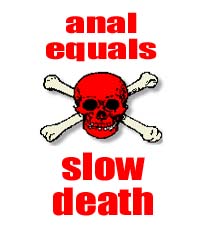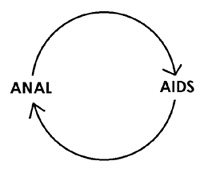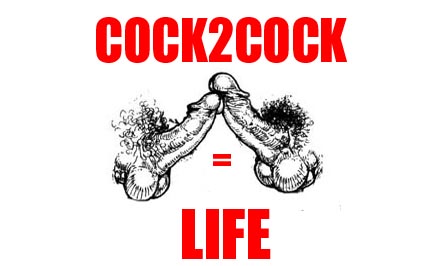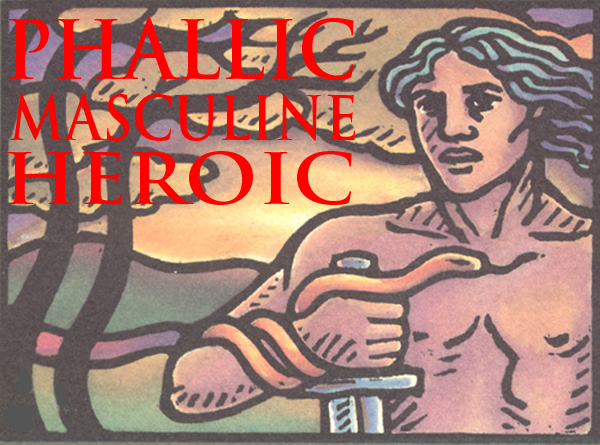




How effective have MSM condom campaigns actually been?






How effective have MSM condom campaigns actually been?

How effective have MSM condom campaigns actually been?
8-20-2006
These are some excerpts from a forthcoming book by UC Berkeley epidemiologist James Chin, who's spent virtually his entire career in public health and dealing with HIV / AIDS.
Dr. Chin is without question one of the world's leading HIV / AIDS epidemiologists.
HIV Transmission in MSM with Multiple and Concurrent Sex Partners
Organized gay empowerment movements emerged during the 1960s and 1970s in major cities in the USA and Europe. These movements coincided with the heterosexual revolution in most Western countries that were more accepting of greater sexual freedom. However, the sexual revolution and gay empowerment movements also coincided with the introduction of HIV into several gay populations during the 1970s. Thus, along with major increases in the numbers of gay men flocking to cities such as SF, NY, London, etc., there was also a marked increase in sexual risk behaviors among MSM. The development of gay bath houses where sex contact with many different partners during a single visit was routine created a perfect setting for transmission of sexually transmitted infections (STI). Once HIV was introduced into such a venue, explosive spread occurred. In a cohort of MSM who had blood samples collected because they were enrolled in a hepatitis B vaccine study, HIV prevalence rose from 1 percent in 1980 to 25 percent in 1982 to 65 percent in 1984. With increasing global mobility (jet travel) that became increasingly available during the 1970s, HIV-infected MSM from major cities such as SF, NY, and London rapidly spread HIV to MSM networks in most other major cities throughout the world during the 1980s.
Primary HIV prevention in MSM populations must target those who have multiple and concurrent sex partners since MSM with this pattern of risk behavior have the highest risk of acquiring HIV. HIV incidence [the rate of new infections] in most MSM populations has been reduced from the very high rates present during the initial epidemic phase in the late 1970s and early 1980s to much lower "endemic"levels. Most of the observed decreases in annual HIV incidence by the mid-1980s can be attributed to saturation of infection in those with the highest level of risk behaviors. How much of this decreasing incidence can be attributed to public health prevention programs is not clear and this question will be addressed in the next section of this chapter. However, annual HIV incidence rates [incidence = levels of NEW infection] in MSM populations are still unacceptably high and currently range from about 1 to 5 percent or higher. Recent studies in the MSM population in San Francisco indicate that annual HIV incidence may now be as low as 1 percent. This decrease in annual incidence may be in part attributable to the new social phenomenon of serosorting, i.e., selecting sex partners based on their known HIV status and the lower viral load of infected persons who are receiving anti-HIV drug treatment (highly active anti-retroviral treatment -- HAART). However, even a "low" annual incidence rate of 1 percent (1/100) is still unacceptably high for a severe infectious agent such as HIV.
The MSM community and public health programs will need to work together to reduce annual HIV incidence in MSM populations throughout the world to as low a level as possible. In addition to behavior changes, such as reducing the number of sex partners and consistent use of condoms for penetrative sexual intercourse, much more can and should be done, to reduce the amount of blood or semen that is exchanged during MSM sex contacts [such as non-anal non-oral alternatives, including mutual masturbation and Frot]. The primary focus of public health prevention of sexual HIV transmission in MSM populations has been on those MSM with the highest number of sex partner exchanges, i.e., on a daily or weekly basis. However, it should be noted that the general patterns of sex partner exchange in MSM are identical to the patterns of heterosexual HIV transmission that are presented in the following section, but the proportion of MSM at the highest level of risk is much higher than in most heterosexual populations.
How Effective Have HIV/AIDS Programs Been in Preventing HIV Transmission?
The effectiveness of primary HIV prevention in healthcare settings, especially in preventing transmission from blood transfusions and blood products in developed countries, was clearly shown by the virtual elimination of such transmission after the advent of HIV testing capabilities and the implementation of "universal precautions." Similarly, the virtual elimination of MTCT [mother to child transmission] in most developed countries can clearly be attributed to MTCT prevention programs that have been developed over the past decade. However, the effectiveness of prevention programs in reducing sexual and IDU HIV transmission continues to be far less clear.
Measurement of annual HIV incidence is difficult since the error in measuring HIV prevalence is usually so high that any change in annual incidence could easily fit within this range of error. In addition, HIV prevalence in any country, especially large countries, is comprised of many separate HIV epidemics, each occurring within different sex or IDU networks at different times. In the USA, HIV epidemics exploded in MSM populations in major cities in California and New York during the same time period. Shortly thereafter, explosive HIV epidemics were documented in IDU populations mainly on the east coast, with less severe IDU epidemics in the rest of the country. We now know that the general pattern and prevalence of MSM risk behaviors in San Francisco and New York City were very similar and the HIV epidemic curves in these two cities were also similar in shape and in the general prevalence levels reached. In contrast, the patterns and prevalence of IDU risk behaviors were quite different on the east coast where "shooting galleries" were present whereas on the west coast IDU networks were generally much smaller. Thus, the lower HIV prevalence in IDU populations found on the west coast can be attributed to the lower risk of HIV transmission within smaller IDU networks and not necessarily to any better HIV prevention programs on the west coast.
All infectious disease epidemics have similar stages: an early epidemic stage when R0 (the reproductive number of the infectious agent) is the highest; a slowing of epidemic spread when R0 begins to decrease; a peaking or leveling of epidemic transmission; and finally a decreasing phase when R0 is < 1. The impact of HIV prevention programs on any national prevalence trend is very difficult to measure since there are no valid control populations for comparison. If HIV was truly an infectious disease agent for which all or most persons in the population were at about equal risk, then significant differences in HIV prevalence in one population compared with another might be attributed to differences in prevention programs. If prevention programs are implemented when HIV epidemics are at or near their "natural" peaks, the subsequent decrease in prevalence might be incorrectly attributed to prevention programs. Yet most of the observed decrease might more likely be due to a saturation effect -- infection of most of the population with the highest risk behaviors. Thus, only a small proportion of the decrease in HIV prevalence might be due to prevention measures. The following section illustrates these problems in attributing reductions in observed HIV prevalence trends to prevention programs.
Decreasing HIV Incidence in an MSM Cohort
Figure 8.2 presents estimates of HIV prevalence and incidence based on point prevalence data from a cohort of MSM in San Francisco. Blood samples were collected from this MSM cohort because they were enrolled in a hepatitis B vaccine study. HIV prevalence rose from 1 percent in 1980 to 25 percent in 1982 to 65 percent in 1984. EPIMODEL was used to fit a prevalence curve to the three HIV prevalence data points and to calculate the annual HIV incidence needed to generate the "fitted" prevalence curve. According to this modeling of the HIV epidemic in this MSM cohort, annual HIV incidence peaked in 1983 at over 20 percent and then decreased sharply and dropped to about 5 percent by 1985.
The prevalence curve suggests that by 1983, about half of the MSM cohort, most likely the half with the highest sexual risk behaviors were infected with HIV. After 1983, HIV incidence fell sharply because the remaining half of the cohort probably had less risky behaviors and/or there was some overall reduction in sexual risk behaviors as a result of increasing reports of deaths attributed to this "emerging" disease. It should be noted that funding of State HIV/AIDS prevention programs was not started until after 1985.
[emphases mine]
Bill Weintraub:
There are two key terms here:
"Prevalence" is the total number of guys infected.
"Incidence" is the level of NEW infections.
I know this is a lot of scientific jargon, but the point is that HIV incidence -- the level of new infection -- was at 20% in 1983 and had dropped to 5% by 1985.
While Chin points out "that funding of State HIV/AIDS prevention programs was not started until after 1985."
That means that the impact of condom campaigns has been minimal at best.
Because by 1985, most of those who were going to be infected already were: HIV "prevalence" -- that is, the total percentage of guys infected -- was at 65%.
A terrible figure.
While new infections -- "incidence" -- had dropped from 20% in 1983 to 5% in 1985.
Do you understand?
As prevalence increased, incidence decreased, because most of the people whose behavior would result in infection -- were already infected.
Once again, that means that most of those whose behavior -- that is anal penetration -- put them at risk for infection, had already been infected by 1985.
And that the incidence of NEW HIV infections was down to 5% BEFORE condom campaigns had truly begun.
MSM HIV prevalence, it is said, declined from roughly 1985 to 1995.
That's because the number of new infections remained relatively constant, while those who had been infected earlier died.
And, despite 20 years of condom campaigns aimed at American MSM, incidence has stayed at between 5 and 1% per year ever since.
As this Toronto AIDS Conference article demonstrates:
The Toronto Sun
August 18, 2006
By KEVIN CONNOR
The AIDS epidemic is re-emerging in the gay community as more men are engaging in unprotected sex.
"With the new treatments, more people are living. It's not seen as a fatal thing. HIV is seen as a long-term manageable disease," said Rui Pires, the gay men's community education co-ordinator with the AIDS Committee of Toronto. "There is also the misconception that there is a cure," he said yesterday at the 16th International AIDS Conference.
In Toronto, the number of new HIV infections started to drop in the mid-1980s. In 2000, Toronto had 554 new HIV infections, which is 400 more than in 1996.
The trend is happening worldwide.
..
So: for more than 20 years gay males have been told over and over and over again to "Use a condom every time -- every time" they have sex.
But they don't.
Inconsistent use + incorrect use + breakage and failure + DISINHIBITION --> Increased HIV prevalence each and every year.
What MSM condom campaigns have actually accomplished, both in my view and that of my colleague Chuck Tarver, is to cement the identification of "gay sex" with "anal sex," and thus prolong the epidemic.
Anal begot AIDS;
AIDS begets anal:

By the way, the name of Dr. Chin's forthcoming book is THE AIDS PANDEMIC: The collision of epidemiology with political correctness
Sounds like a good read to me:
In 1987, Jon Mann appropriately declared that the quest for effective treatment and a possible cure for AIDS was an inherent basic human right of all persons living with HIV. However, he went on to say: "Being excluded from the mainstream of society, or being discriminated against on grounds of race/ethnicity, national origin, religion, gender, or sexual preference, led [leads] to an increase of HIV infection." From my perspective, discrimination clearly raises barriers to HIV/AIDS prevention and treatment programs, but discrimination is not a determinant of HIV risk behaviors and, thus, not a determinant of epidemic HIV transmission. This glorious myth was quickly and uncritically accepted by AIDS activists, and is the centerpiece of UNAIDS? litany that poverty, discrimination, and lack of access to healthcare are major determinants of high HIV prevalence. Personally, I am 100 plus percent against poverty, discrimination, and lack of access to healthcare, but I also believe that even if "we" were able to eliminate these social and public health problems, we would not make much of an impact on the high HIV prevalence rates that are present in MSM, IDU and many SSA populations.
Major Determinants of Epidemic HIV Transmission
I need to stress that my understanding of HIV transmission dynamics is not very different from most mainstream epidemiologists. The problem in accepting my conclusions and paradigm is that most AIDS activists do not want to acknowledge that epidemic HIV transmission requires the highest risk patterns and prevalence of HIV risk behaviors. These activists do not want to further stigmatize persons or population groups (MSM, IDU, FSW, etc.) who have such high levels of HIV risk behaviors and who are already marginalized. First and foremost, we have to be aware that, as described in Chapter 5, all published sex partner studies show the risk of HIV transmission from any single coital act is very low -- about 1 per 1,000 or less. By contrast, a pandemic influenza virus would be capable of generalized spread in any population because virtually all infants, children, and adults, young or old would be at moderate to high risk of infection to such an agent. However, HIV tran! smission requires the exchange of a significant amount of blood or sexual fluids. Thus, only a small percent of most general populations or "ordinary" persons would be at moderate to high risk of exposure to and infection with HIV.
There is no question among infectious disease epidemiologists that the primary determinants of epidemic (R0 >1) HIV transmission are risk behaviors that include having unprotected sex with multiple and concurrent sex partners and/or routinely sharing drug injecting equipment with other IDU. Epidemic HIV transmission has been documented only where the highest levels of such risk behaviors are present. Thus, it is only logical to conclude that in the absence of high HIV risk behaviors, epidemic (R0 >1) transmission will not occur. What has been essentially ignored is the more important and relevant question: what are the major determinants of HIV risk behaviors? Most social activists do not hesitate to say that poverty and discrimination are the root causes of HIV risk behaviors. However, I don?t know of a clear and simple answer to this question, since I consider it more likely that cultural, social, religious, and many other factors, including economic factors, al! l collectively play some role as determinants of sexual and IDU risk behaviors. Because there is no clear answer to what are the major determinants of HIV risk behaviors, many worthy social agendas have been hitched onto the AIDS program wagon. These social issues, such as poverty, discrimination, gender inequity, and lack of access to healthcare, are major problems that clearly hinder effective HIV prevention and treatment programs, but they are not the major determinants of epidemic HIV transmission!
[emphases mine]
So: Notice that Dr. Chin says "discrimination is not a determinant of HIV risk behaviors and, thus, not a determinant of epidemic HIV transmission."
Yet for years, gay leaders have told us that homophobia causes AIDS.
That's not true.
Among gay men, anal penetration causes AIDS.
You can live in the most homophobic town on earth, but if you don't do anal, you won't get AIDS.
It's as clear as that.
In point of fact, AIDS first took off in SF and NYC, two of the more tolerant and gay-friendly towns of their era.
If homophobia caused AIDS, the epidemic should have started in the Bible Belt.
Birmingham.
Or Nashville.
It didn't.
Nevertheless, at the Toronto International AIDS Conference, activists from Bill and Melinda Gates right down to the man who makes "condom art" insisted that "social issues" -- such as poverty, discrimination against gays, gender inequity, stigmatization of prostitutes, etc -- were in effect the causes of the epidemic.
They're wrong.
The epidemic is caused by risk behavior: promiscuous anal among MSM, promiscuity in sub-saharan Africa, IDU, prostitution.
That's it.
Until those issues are addressed head-on -- nothing will change.

© All material Copyright 2006 by Bill Weintraub. All rights reserved.






AND


Warriors Speak is presented by The Man2Man Alliance, an organization of men into Frot
To learn more about Frot, ck out What's Hot About Frot
Or visit our FAQs page.


© All material on this site Copyright 2001 - 2010 by Bill Weintraub. All rights reserved.


